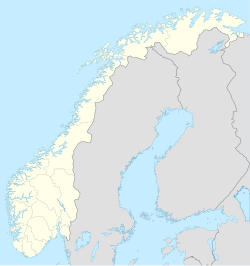Obrestad
In today's world, Obrestad has become a topic of great relevance and interest to a large number of people. Since its discovery until today, Obrestad has been the subject of multiple studies, debates and scientific advances that have contributed to expanding our knowledge on this topic. In this article, we will explore different aspects related to Obrestad, analyzing its impact on society, its evolution over time, and the possible implications it has for the future. Through a multidisciplinary perspective, we will seek to understand in depth everything that Obrestad has to offer, and how its influence extends to different areas of our daily lives.
Obrestad | |
|---|---|
Village | |
 View of the village harbour | |
Location in Rogaland county | |
| Coordinates: 58°39′18″N 05°34′04″E / 58.65500°N 5.56778°E | |
| Country | Norway |
| Region | Western Norway |
| County | Rogaland |
| District | Jæren |
| Municipality | Hå |
| Elevation | 25 m (82 ft) |
| Time zone | UTC+01:00 (CET) |
| • Summer (DST) | UTC+02:00 (CEST) |
| Post Code | 4365 Nærbø |
Obrestad is a very small farming village in Hå municipality in Rogaland county, Norway. The village is located in the district of Jæren on the shore of the North Sea, about 4 kilometres (2.5 mi) west of the village of Nærbø.
A harbour was constructed in Obrestad in 1874 and it is still in use. The Obrestad Lighthouse was built in 1873, about 900 metres (3,000 ft) northwest of the harbour.[2] A sea rescue station for seafarers was established at Obrestad in 1854. It was in use until 1977.
History
Local landowner Eirik Bjodaskalle, who lived around 950 AD, is said to have had his large farm at Obrestad. Eirik Bjodaskalle was the father of Queen Astrid, the mother of the famous Viking King Olaf Tryggvason. Snorri Sturluson chronicles this in the Saga of King Olaf Tryggvason which is part of Heimskringla. Obrestad was the place where Astrid and Olaf had to seek refuge before heading east.
Obrestad surname
Many families that lived in Obrestad over the centuries took Obrestad as their surname such as:
- Tor Obrestad (1938–2020), a Norwegian contemporary writer
- Annette Obrestad (born 1988), a Norwegian poker player
References
- ^ "Obrestad, Hå (Rogaland)" (in Norwegian). yr.no. Retrieved 2016-06-21.
- ^ Store norske leksikon. "Obrestad fyr" (in Norwegian). Retrieved 2016-06-21.

